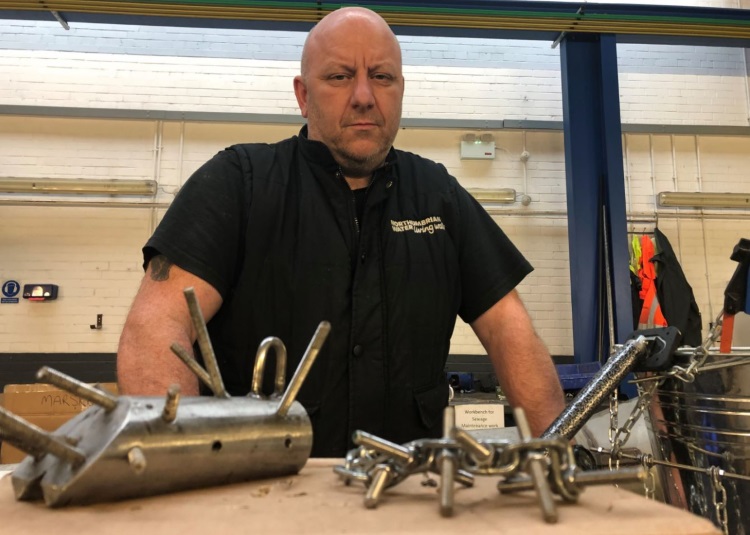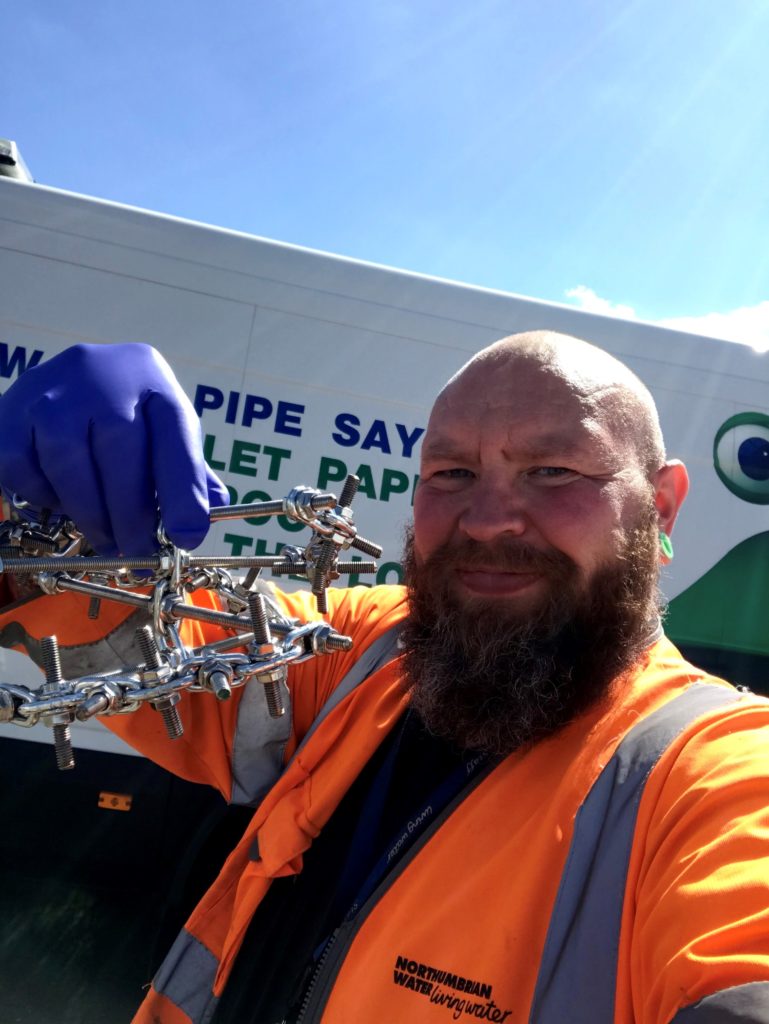Collections Systems Professionals Invent New Tools for Battle Against Non-Flushables
Flushing woven and nonwoven household products – such as wet wipes for restroom use or cosmetic wipes for removing makeup – is a global issue for the wastewater sector. These products are often mislabeled as “flushable” despite their inability to disperse in conventional collections systems. Flushing them can result in costly and messy septic backups, environmental contamination, and disruptive blockages in collections-systems.
Earlier this year, Northumbrian Water (Durham, England) reported that approximately 64% of the 15,600 collection-system blockages uncovered by its field staff in 2019 resulted directly from customers flushing products improperly labeled as “flushable.” To address the problem, Northumbrian Water launched its new Bin the Wipe public outreach campaign in January that aims to familiarize customers with the dangers of flushing anything other than the 3 P’s — pee, poop, and toilet paper.
As part of the campaign, the utility is testing several new wipes-related devices invented by Northumbrian Water’s technical staff. Not only do these devices minimize wipe-related blockages, but they also identify the specific buildings from which the problems originate.
Enter the Porcupine
In 2014, Northumbrian Water technical advisor Ray Armstrong used simple materials in his shed to create the Porcupine. The Porcupine is a small, metal tube covered in spikes. Users deploy the tool into individual maintenance shafts for 24-hour periods. When wastewater flows through the specific section of pipe in which the Porcupine hangs, its spikes skewer intact wipes, preventing downstream blockages.

After the Porcupine’s deployment, utility staff can then manually remove captured wipes. Judging by the specific spikes that collect the most wipes, users can identify the direction from which the wipes originated and repeatedly re-deploy the Porcupine, following the sewer upstream until they pinpoint specific buildings contributing to the blockages. The results often are specific enough to distinguish 1 to 2 properties as culprits, explained Northumbrian Water sewerage maintenance operative Mark McCone in a video about the method.
However, the Porcupine has its limits, utility staff described. For example, while effective in large-diameter pipe sections, the tool is less practical for smaller channels. It is also too lightweight to withstand high-speed wastewater flows.
A Growing Family of Blockage-Busters
Coinciding with the launch of Bin the Wipe, more of the utility’s staff have followed in Armstrong’s footsteps by creating their own adaptations of the Porcupine.

McCone began by using similar objects, such as chains, bolts, and sharp metal pieces, to create two new iterations of the Porcupine for use in a wider range of pipes.
“The original Porcupine that Ray invented is a great tool for use in larger pipes, but to get the best out of the idea for pipes of different sizes, I decided to go into the workshop and create some adaptations,” McCone said in a release. Northumbrian Water began using McCone’s tools — named the Stinger and the Sentinel — in January.
In May, Northumbrian Water sewerage maintenance operative Steve Green developed the Barbarian. The tool, which resembles a crown, features a ring of sturdy metal barbs capable of capturing woven wipes before they reach the water resource recovery facility headworks. Weighing 0.9 kg (2 lb), the Barbarian is heavier than its predecessors, enhancing its effectiveness in smaller, higher-velocity channels.
“This latest device will help us in the battle against sewer blockages caused by wet wipes and adds to the range of blockage-tackling tools we already have,” Green said in a release. “We will continue to work with customers and educate them on the heart-breaking consequences wipes can have when flushed, from causing people’s homes to be flooded with toilet waste to the environment being polluted.”
Watch the following video from Northumbrian Water for more information on the utility’s growing arsenal of wipes-catching tools:
‘Bin the Wipe’
Although the wastewater sector understands what is and is not “flushable,” customers may not recognize the risks. Many countries do not regulate the use of the word flushable on wipes products, compounding customer confusion.
Northumbrian Water’s Bin the Wipe campaign focuses on conveying the message that wipes belong in trash bins and should never enter sewers in the first place. In addition to developing new tools like the Barbarian, Stinger, and Sentinel, utility staff are ramping up social-media messaging on the topic.
Recent efforts include several new educational videos and public service announcements, enlisting beauty and cosmetics influencers to spread the word about non-flushables, and distributing nearly 1,500 restroom-sized trash bins to collect disposables that might otherwise be flushed.
“If customers are going to opt for using wipes — over a range of natural, reusable alternatives available in most supermarkets … which are often cheaper than buying single-use products – then please make one simple change,” Green urged. “That change is to bin the wipe and not to use toilets as a bin.”
Learn more about Northumbrian Water’s Bin the Wipe campaign at its website.
— Justin Jacques, WEF Highlights
